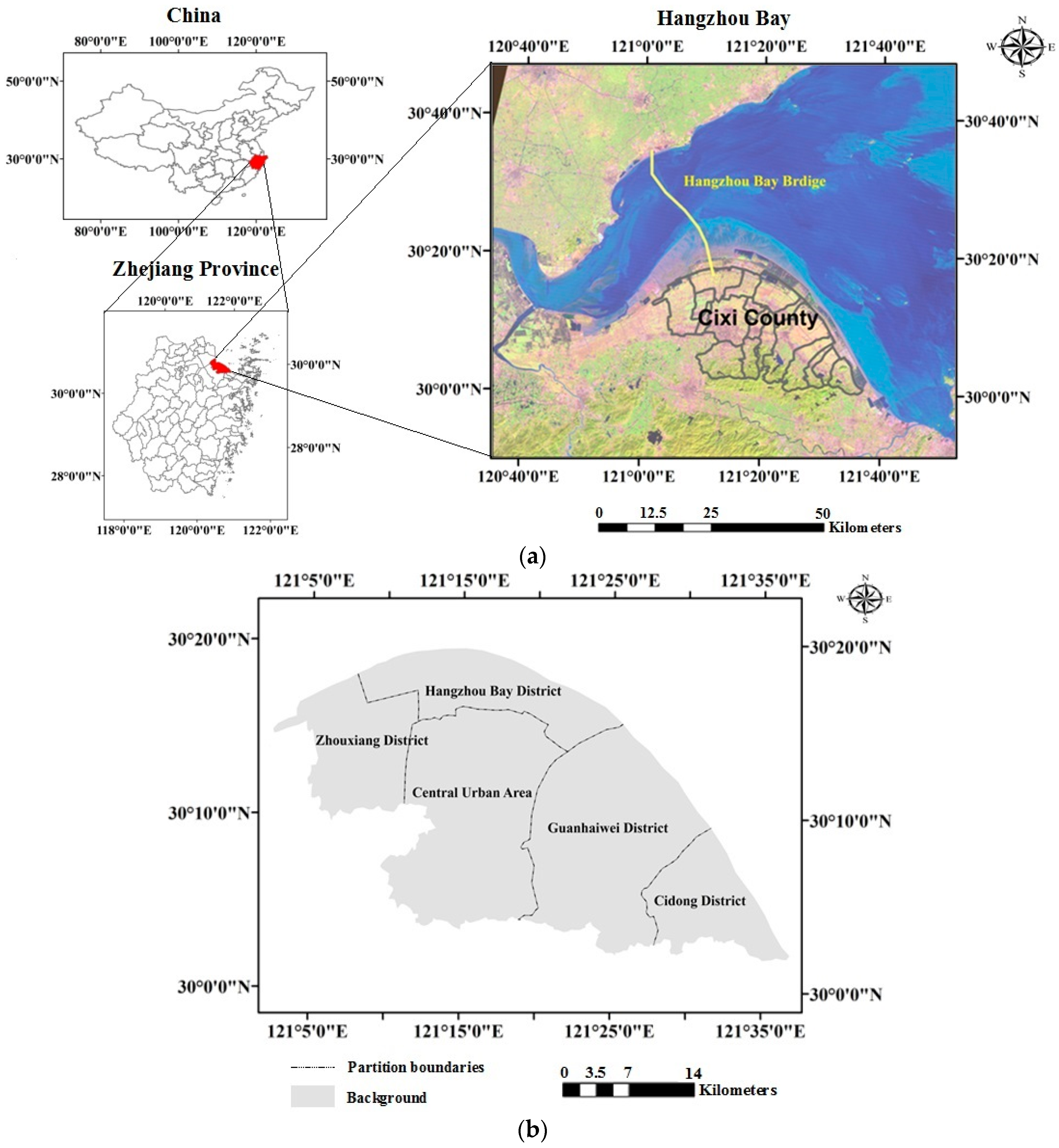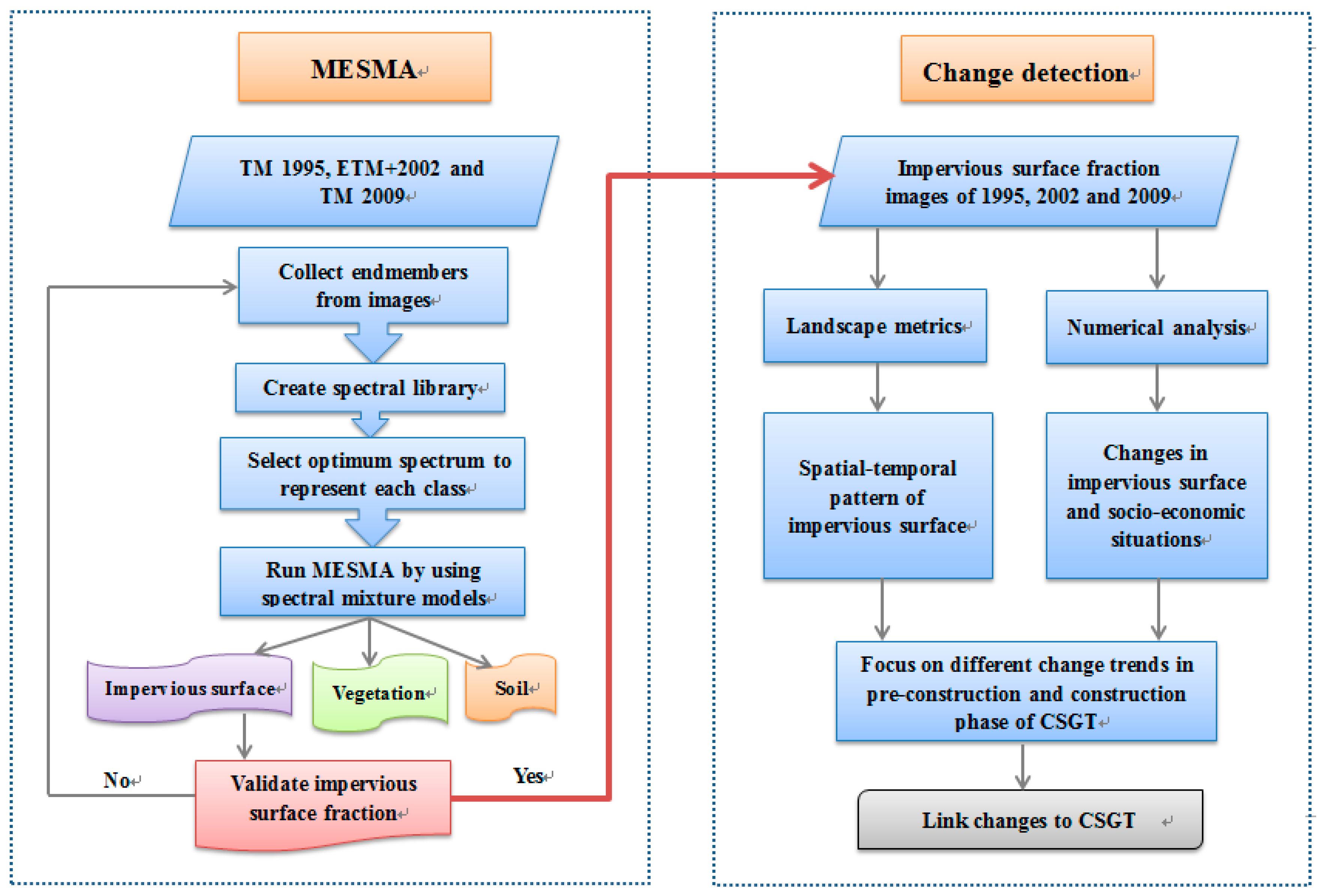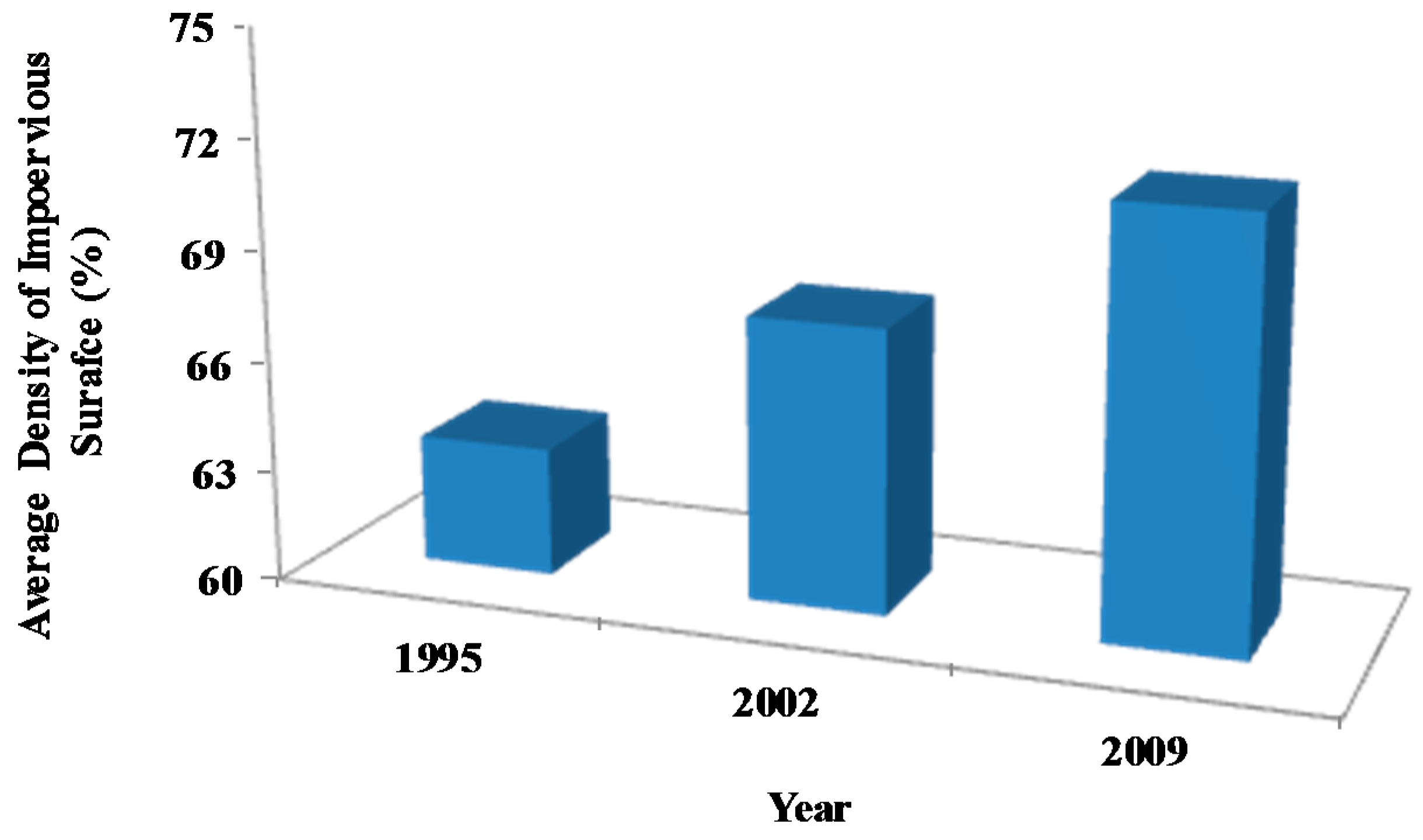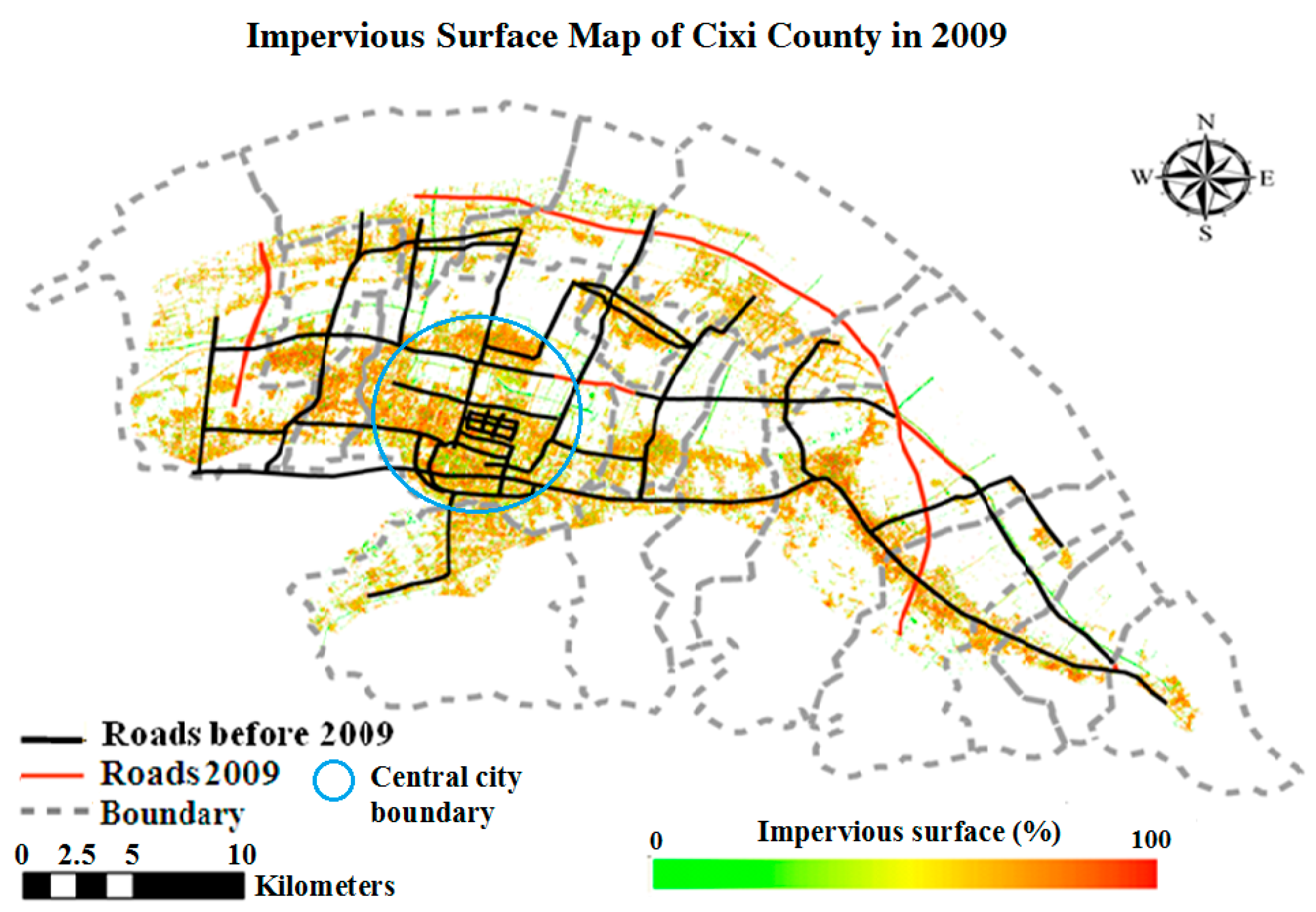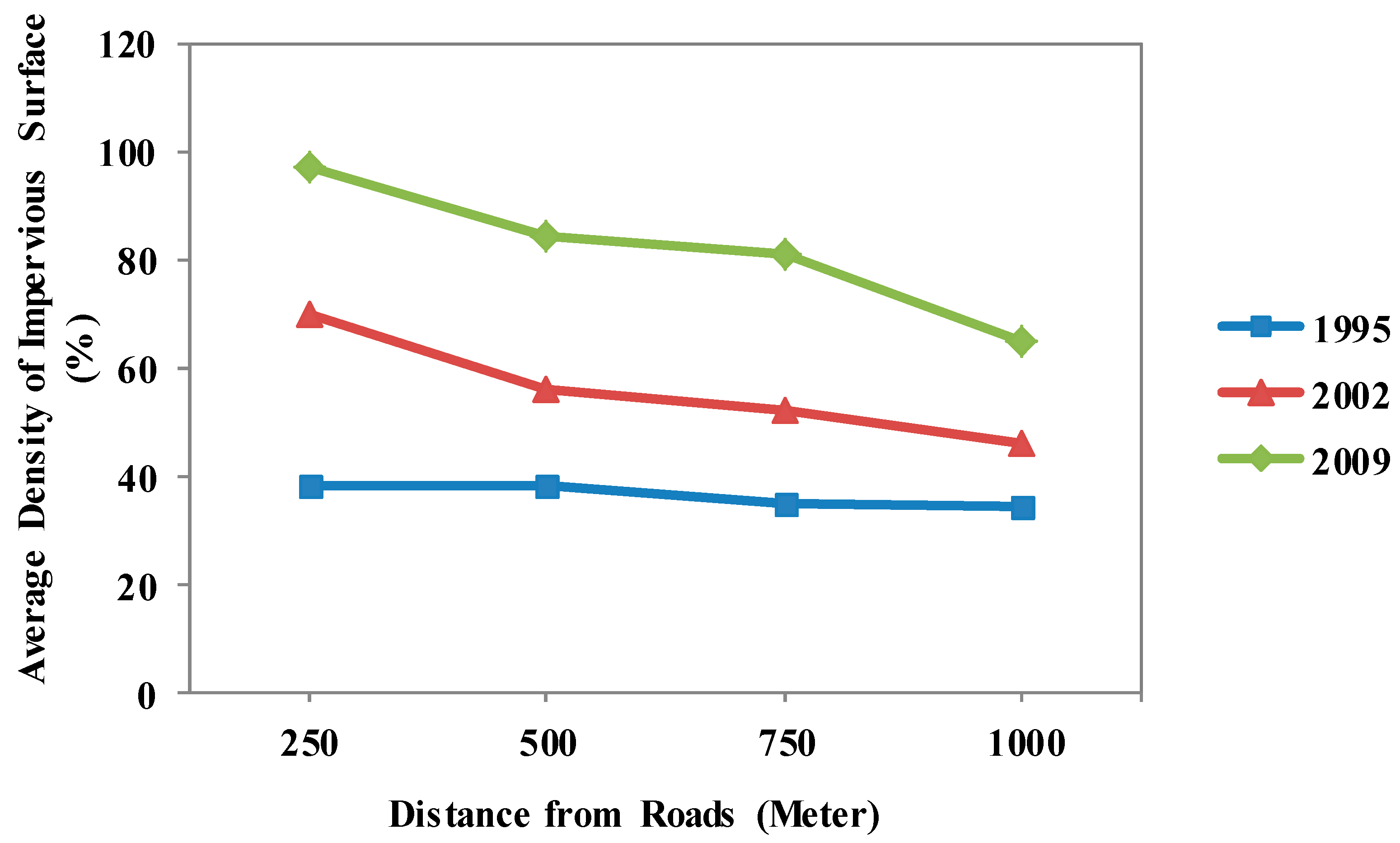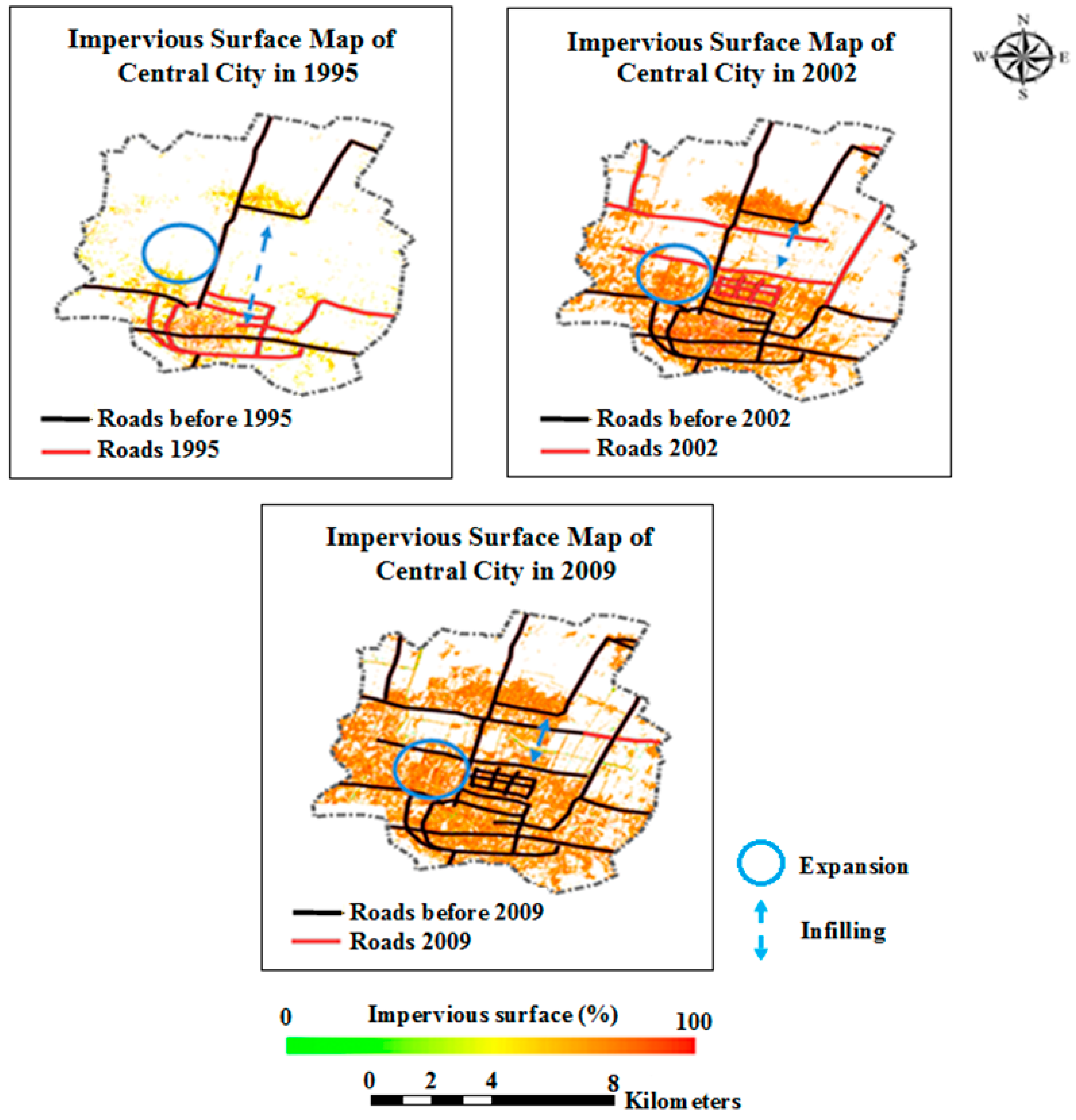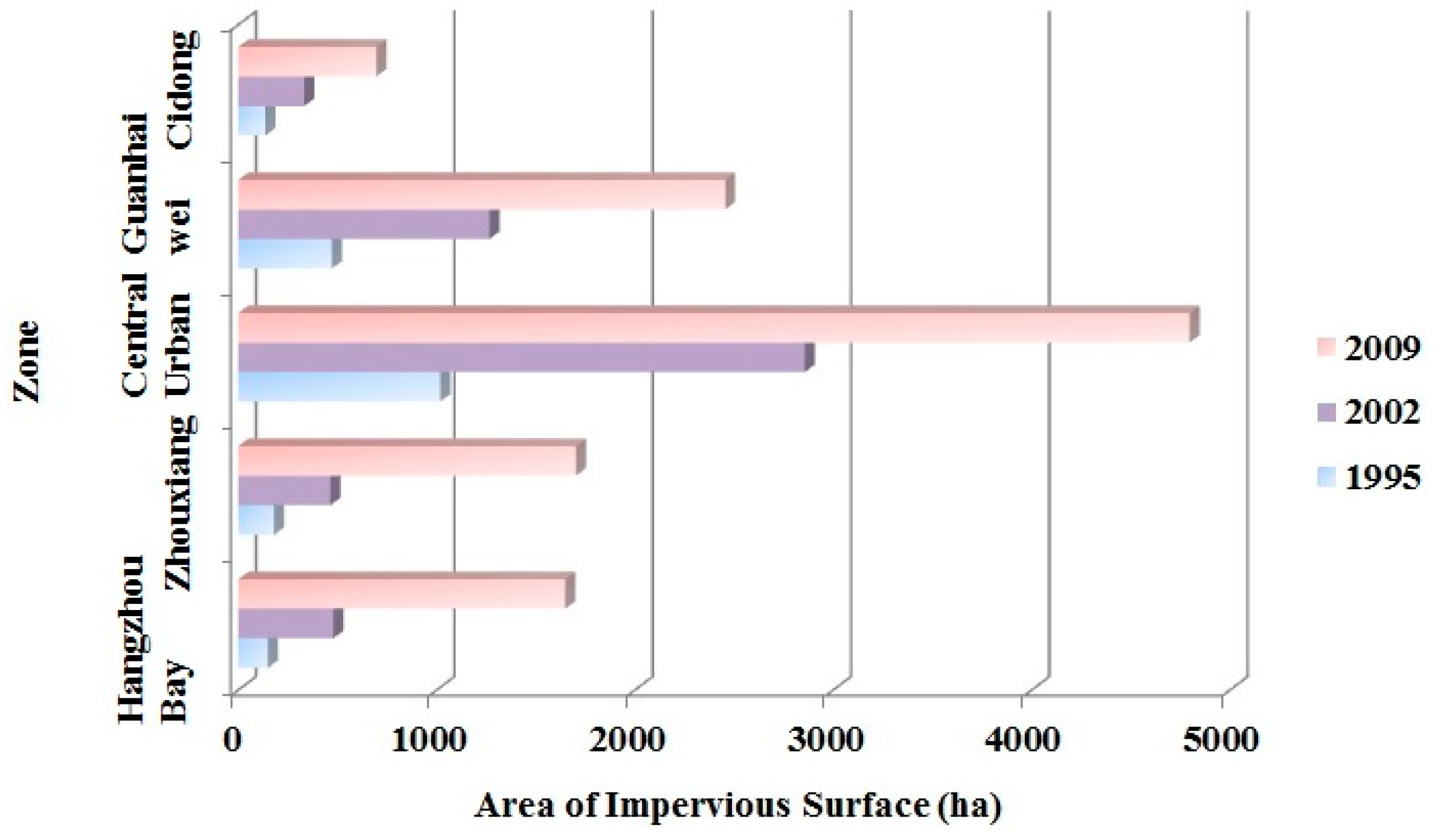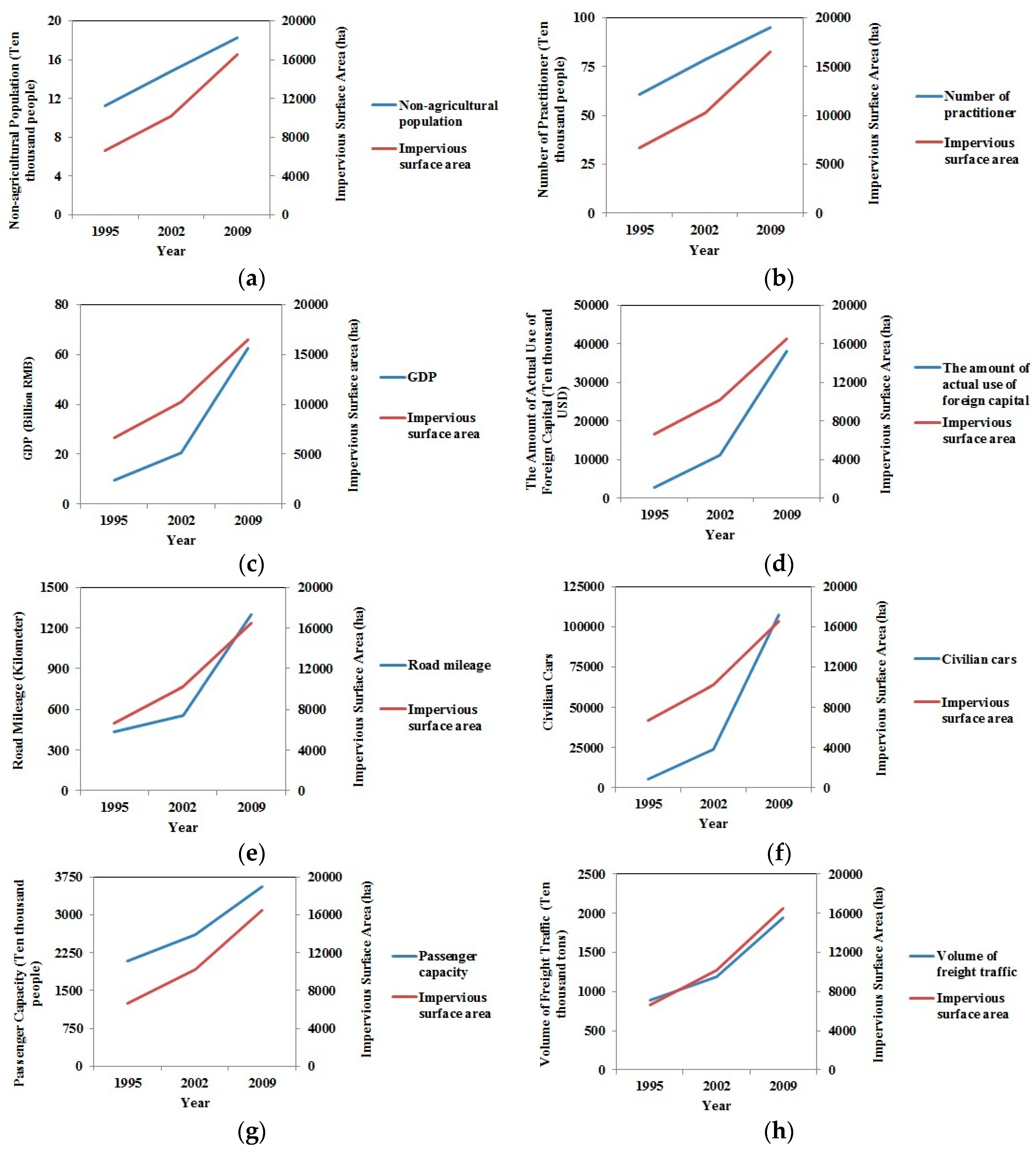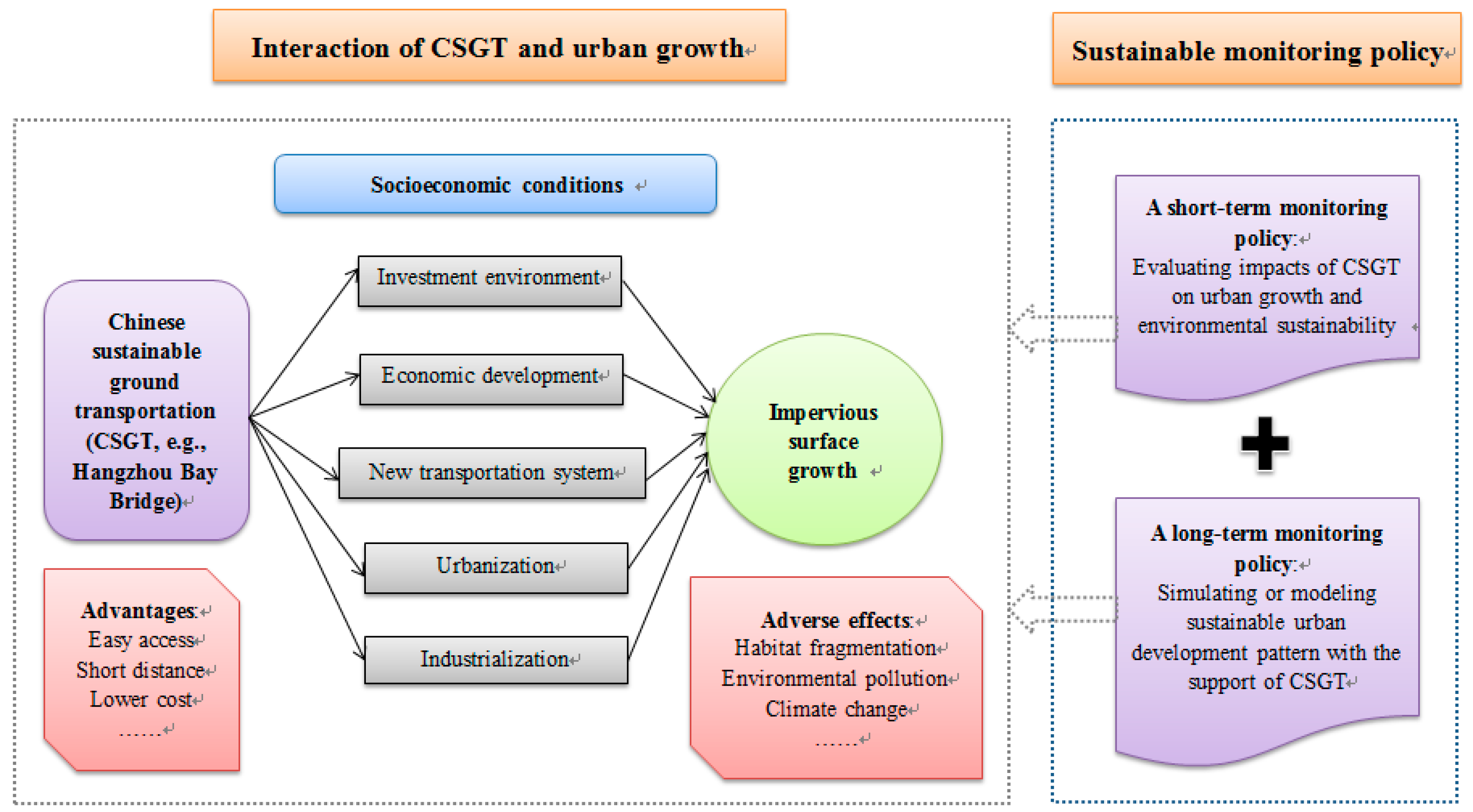1.1. Introduction of Research Significance and Research Method
China started to implement reform and opening up policy in 1978, resulting in the evolution of the urban land market because most economic activities were centered in urban areas [
1]. These changes led to considerable urban sprawl [
2,
3,
4]. In this sense, ground transportation has played a significant role in the socio-economic development of China. However, sustainable transportation continues to be a topic of interest as China looks to adopt best practices for environmental protection, economic efficiency, and social progress. Sustainable ground transportation can be defined as the capacity to support the mobility needs of people, freight and information in a manner that is least damaging to the environment [
5]. One of the more comprehensive programs that utilize transportation investments to create a sustainable transportation infrastructure is Chinese Sustainable Ground Transportation (CSGT) (e.g., super expressways, high-speed railways and cross-sea bridges). In an attempt to build a new CSGT-based comprehensive transportation system and promote sustainable social development, the central government enacted the “11th and 12th five-year comprehensive traffic system development plan”. It focused on alleviating transportation pressure, reducing fuel use, and decreasing labor costs [
6].
Despite the goal of promoting CSGT, the program has inherent challenges related to land use and land cover change (LULCC), such as the conversion of non-urban lands to impervious surfaces. CSGT may contribute to the growth of impervious surfaces in two critical ways. Firstly, by constructing ground transportation systems, such as highways and railways, creates anthropogenic features through which water cannot infiltrate into the soil [
7,
8,
9,
10]. Secondly, sustainable or improved transportation infrastructure that has economic advantages, such as lower commuting times, may encourage the conversion of farmland or vegetation cover to impervious surfaces [
11,
12,
13,
14]. Combined, these factors are likely to lead to deterioration of natural ecosystems in urban regions.
As a critical aspect of sustainable urban and transportation development, controlling the growth of impervious surfaces is a common goal of environmental management and urban planning [
7,
14]. Previous studies have characterized the dynamics of impervious surface changes and their relationship with environmental degradation [
7,
10,
13]. However, the relationships between sustainable transportation infrastructure, such as CSGT, and impervious surface changes are poorly understood.
Multiple endmember spectral mixture analysis (MESMA) and landscape metrics can be used to quantify impervious surfaces and detect the adverse consequences of CSGT on the environment over time [
15,
16,
17]. MESMA can effectively measure the expansion and densification of impervious surfaces and the degree of urbanization because the approach is based on impervious surface fractions (ISFs) derived from remotely-sensed imagery [
18,
19,
20]. This method provides estimates of the impervious surfaces at the sub-pixel level and minimizes the impacts of mixed pixels [
14]. Furthermore, landscape metrics can explain the spatial structures and patterns of landscapes because they account for spatial information, such as location, distance, direction, and linkage [
15,
21].
Methods for identifying impervious surfaces via remote sensing, such as MESMA and landscape metrics, have been used in two different ways. In the main approach, MESMA has been used for urban growth analyses, impact assessments, and policy evaluations [
14,
16,
20]. Additionally, a considerable number of studies have integrated remotely-sensed data and landscape metrics to analyze the negative effects of ground transportation, such as fragmentation, loss of biodiversity, and creation of edge habitats [
22,
23,
24]. However, few studies have explored the combined application of MESMA and landscape metrics to analyze the impacts of CSGT, such as sea bridges, on changes in impervious surfaces.
This study investigated the potential impacts of CSGT on the growth of impervious surfaces by combining MESMA and landscape metrics. A historical analysis from 1995 to 2009 was based on ISFs from the Landsat archive. In this paper, we apply this approach to examine the spatial and temporal dynamics of impervious surfaces in the pre-construction (1995–2002) and construction phase (2002–2009) of the Hangzhou Bay Bridge, as a representative of CSGT. The objectives of this paper are as follows: (1) demonstrate the ability of MESMA to monitor the impacts of the Hangzhou Bay Bridge on impervious surface changes; (2) quantify the impacts of the bridge on impervious surface structures using landscape metrics; and (3) analyze the effects of the bridge on the intensity and extent of impervious surfaces.
It is worth noting that it would be difficult to separate the impacts of ground transportation factors, such as the Hangzhou Bay Bridge, from other factors when assessing changes in urban impervious surfaces. To minimize this problem, we selected Cixi County, Ningbo, Zhejiang Province, as our study area because part of the bridge is located in this county. The county is isolated by mountains and the sea and, prior to the construction of the Hangzhou Bay Bridge, it had not received large-scale infrastructure investment. Therefore, the study assumed that the construction and opening of the Hangzhou Bay Bridge accelerated the growth of impervious surfaces.
The following subsection supplies a brief introduction to CSGT in China. In
Section 2, we present the study area, data, and methodology.
Section 3 and
Section 4 provide the results and discussion, respectively. The conclusions are then presented in
Section 5.
1.2. Brief Background on Chinese Sustainable Ground Transportation (CSGT)
Ground transportation networks have been identified as one of the most important drivers of rapid industrialization and urbanization in China [
25,
26]. The transportation corridors were initially inadequate in the People’s Republic of China. However, China has concentrated on efficient and modern transportation systems since 1978, specifically expressways, high-speed trains, and cross-sea bridges. In this context, CSGT has facilitated sustainable economic and urban growth in China.
Road networks are convenient and flexible means of transportation, and they connect cities, airports, harbors, and railways. Recently, China has rapidly developed its expressways. According to [
27], China began constructing its first motorway, the Shenyang Dalian Expressway, in 1984. Widespread expressway construction in China began in the early 1990s. At that time, the total length of expressways was 271 km, and the total expressway length in China reached 2141 km in 1995. China built a 5583 km expressway in 2002, increasing the total expressway length to 25,200 km. By the end of 2009, the total expressway length had increased to 651,000 km [
28,
29].
With the rapid development of China’s economy, the scale and technical level of Chinese railway construction has continuously improved. China’s railway length is 76,580 km, ranking third in the world (after the United States and Russia) and first in Asia [
30]. Additionally, China has developed high-speed railways based on the “11th five-year plan”. In 2008, China began operating its first high-speed railway, which was named the Beijing-Tianjin intercity railway. By the end of 2011, the total length of China’s high-speed railways had increased to more than 10,000 km [
31].
Additionally, China has constructed long-distance cross-sea bridges to accelerate economic growth in coastal cities. The most important bridges are summarized in
Table 1. The starting point of the Qingdao Bay Bridge is a national high-speed highway that connects Qingdao and Lanzhou. This bridge is part of the “five vertical, four horizontal and one ring” highway network in Shandong Province [
32] and is the world’s second longest cross-sea bridge [
33]. The Hangzhou Bay Cross-sea Bridge extends southward from Jiaxing to Cixi [
34]. Zhoushan Sea-crossing Bridge connects Hangzhou Bay Bridge with the ring road in Ningbo and has a total length of 50 km [
35]. Finally, the East Sea Bridge connects Shanghai’s Luchao Port and Shengsi County in Zhejiang Province [
33].
The Hangzhou Bay Bridge is the third longest ocean-crossing bridge in the world, spanning Hangzhou Bay in the East China Sea, crossing the Qiantang River at the Yangtze River Delta, and connecting Shanghai to Cixi County. The bridge shortened the ground transportation distance from Ningbo to Shanghai by 120 km and reduced the travel time from four hours to two and a half hours. During its first year of operation (i.e., from May 2008 to May 2009), approximately 50,000 vehicles used the bridge daily. The bridge is expected to improve communication and the development of the bay [
36]. In addition, the bridge will reduce transportation costs, decrease travel time, and reduce traffic accidents, saving 44.37 billion RMB during the first 20 years of operation [
37].
